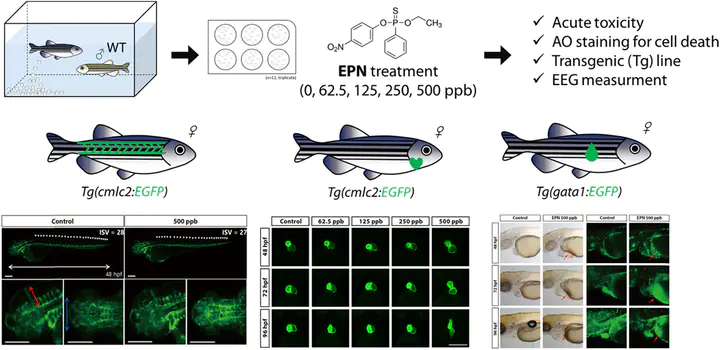Acute toxicity of the insecticide EPN upon zebrafish (Danio rerio) embryos and its related adverse effects: Verification of abnormal cardiac development and seizure-like events

Abstract
Toxicological studies of O-ethyl-O-(4-nitrophenyl) phenylphosphonothioate (EPN) to aquatic vertebrates have been reported, but no reports on toxic mechanism was reported. As zebrafish (Danio rerio) embryos were exposed to EPN, no changes in their survival and hatching rates were observed until 96 h post fertilization (hpf), even at the highest treated concentration of 500 μg/L. In both 250 μg/L and 500 μg/L, edemas were observed in the heart and yolk sac, and a blood pool was also found. Acridine orange staining confirmed apoptotic phynotype, which was the strongest in embryos at 48 hpf. No noticeable difference in the formation and the shape of blood vessels of Tg(fli1a:EGFP) was observed. However, the total body length and number of somite were decreased. Heart formation in Tg(cmlc2:EGFP) were not properly proceeded, and the ventricle did not beat normally at 500 μg/L level. Cardiac development-related genes, myl7 and nppa, were significantly down- and up-regulated in a concentration-dependent manner. The slowed heartbeat was confirmed using Tg(gata1:EGFP), showing stagnant blood flow and seizure-like events were observed. Altogether, EPN can be the cause for the abnormal heart development accompanied by blood stagnation in embryos, interfering normal development with their inner circulatory system.